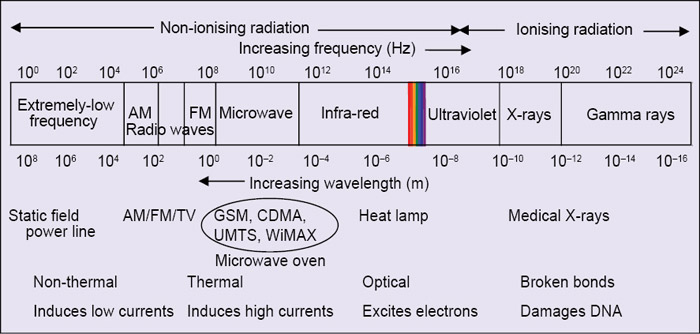Wireless telecommunication systems use a large number of mobile phone towers in order to provide telecom facilities to their subscribers spread across different geographical locations. These towers employ multiple antennae that radiate electromagnetic waves. There is a strong perception relating to the existence of a high level of electromagnetic radiation in the vicinity of these towers, which may cause adverse biological effects. In the absence of suitable policy directives for these tower installations, monitoring, effective control and execution at all levels by governmental bodies, such mushrooming of mobile phone towers could create a sense of panic amongst general public.

As the mobile phone base and various wireless technologies (such as WiMAX, WiBro, iBurst, EV-DO Advanced, LTE-Advanced, etc) are rapidly expanding and evolving, the requirement for such towers will also grow. It is therefore high time that a strict regulatory regime is established, as early as possible, to avoid possible fallout.
According to World Health Organisation (WHO), INTERPHONE (a 13-country coordinated case-control study), independent expert group on mobile phones (IEGMP) and scientific committee on emerging and newly-identified health risks (SCENIHR) study researches, it has been found that electromagnetic radiation can contribute to health deficiency, including an increased risk of brain tumours, eye cancer, salivary gland tumours, testicular cancer and leukaemia. Several surveys have found a variety of self-reported symptoms for people who live close to base stations. Collectively, they have not provided evidence of a relationship, but they have had sufficient limitations to leave the question unresolved. International commission on non-ionising radiation protection (ICNIRP) study has concluded that exposure levels due to mobile phone base stations are generally around one-ten-thousandth of the guideline levels. Moreover, WHO has classified mobile phone radiation on the International Agency for Research on Cancer (IARC) scale into Group 2B—possibly carcinogenic to humans. This means that there could be some risk of carcinogenicity, so additional research into the long-term, heavy use of mobile phones/wireless technologies needs to be conducted.

There is need for not only controlling the haphazard installation of towers but also undertaking systematic study for measurement of radiation levels in some selected high-population-density urban areas to ensure that power density levels are well below prescribed threshold limits. The results need to be made available for public education and scrutiny. Further, it is better to take preventive measures and even try to mitigate radiation levels to provide greater protection to general public and workers.
In India, the present threshold limits prescribed by the government are considered to be rather too generous (one of the highest in the world), and hence there is a need to review and remedy the situation and not wait until it becomes the subject matter of a public-interest petition in light of possible environmental adverse effects.







